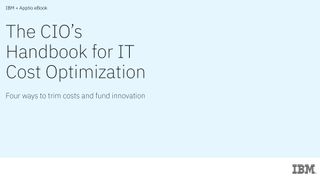The pros and cons of flash storage
A brief look at the pros and cons of flash storage and what the future holds for it

Flash storage was seen as a key foundation for mass storage when it was first created back in the early 1980s.
By using NAND flash memory, data could be deleted and rewritten with much faster erasing cycles than non-flash EEPROM (electrically erasable programmable read-only memory) technology.
Additionally, the creation of USB drives made flash storage popular with users that went on to replace their floppy disks, hard disk drives and CD-ROMs.
The benefits of flash storage are still very apparent today, but with the other long-lasting data storage solutions arriving, such as cloud storage, businesses have many options to consider.
In this article, we take a brief look at the pros and cons of flash storage and where it might advance over the next few years.
Advantages of flash storage
Durable & Reliable
Something that separates flash storage devices from CDs and other storage predecessors is the fact that they are somewhat scratch-proof.
Get the ITPro. daily newsletter
Receive our latest news, industry updates, featured resources and more. Sign up today to receive our FREE report on AI cyber crime & security - newly updated for 2024.
Similarly, they can’t take damage from electromagnets.
As they don't function using moving parts, there are also fewer aspects liable to break, while they can be supported by multiple devices such as gaming consoles, desktops, and laptops.
Faster than other storage
Flash drives offer a great deal of flexibility in that they weigh far less than other storage systems, and are far more portable.
As they consume less power, they don’t warm up in the same manner as other hard drives. Furthermore, flash storage systems can be used for years after purchase in order to keep pace with growing data demands.
As such, they provide savings in both cost and space.
Much more flexibility

Establishing a strong foundation for DataOps
How to gain a competitive advantage with your available data
Backing up your data in a location that’s not reliant on the internet is hugely important, just in case the Wi-Fi cuts out and makes your cloud environment inaccessible.
If data is stored in the cloud it’s also more susceptible to unauthorized access from hackers or threat actors.
With flash storage, it is much more difficult for hackers to access your data and steal it.
Independent of the Internet
We've all been in the position where we’ve backed up information with a flash drive, just in case the Wi-Fi drops and renders cloud backups inaccessible. Data stored in the cloud is also more susceptible to being accessed by hackers, while with flash storage your information is on your person and is far more unlikely to be stolen.
Disadvantages of flash storage
Cost over time
Although the cost of investing in flash storage is less than investing in a cloud solution, and you could have it for years, it’s not infinite.
Flash storage does have a limited number of rewrites, which ultimately means it can’t retain heavy write loads as this use will wear its ability down in the end.
In addition, flash storage is more expensive than the price of HDD, so businesses with smaller budgets might prefer to use the alternative.
Limited sharing compared to the cloud
In the wake of the COVID pandemic, cloud usage has skyrocketed on the back of businesses looking to support increasingly remote or hybrid workforces.
While file sharing via the cloud allows for data transfers of much greater distances - across continents, for example - flash storage devices are not as effective in such scenarios.
When moving data between locally machines, however, flash storage devices are quicker.
Not resistant to malware
As much as flash storage drives can offer more security from cyber attacks, they can still pick up malware from the different machines they’re moved between in those local data sharing scenarios.
It could get lost!
We’ve all heard about those politicians on the train losing sensitive information.
However, ultimately, the future of flash storage is a positive one. Manufacturers have advanced flash storage devices to be much faster and store greater amounts of information, so side by side with cloud storage solutions, a flash storage system that can support a hybrid integration could allow fantastic future flexibility.
Sarah joined ITPro in 2021, moving into all things tech after previously copywriting in marketing roles for leading global brands, including McLaren, Virgin Atlantic and Tesco, writing for email, web, print, and social. Sarah now leads the multi-channel marketing activity for client whitepaper campaigns across IT Pro, Cloud Pro, and Channel Pro, delivering organic B2B lead generation for Dell, AWS, & IBM amongst others, reinforcing brand engagement and brand affinity. You can contact Sarah directly at sarah.thomson@futurenet.com.




